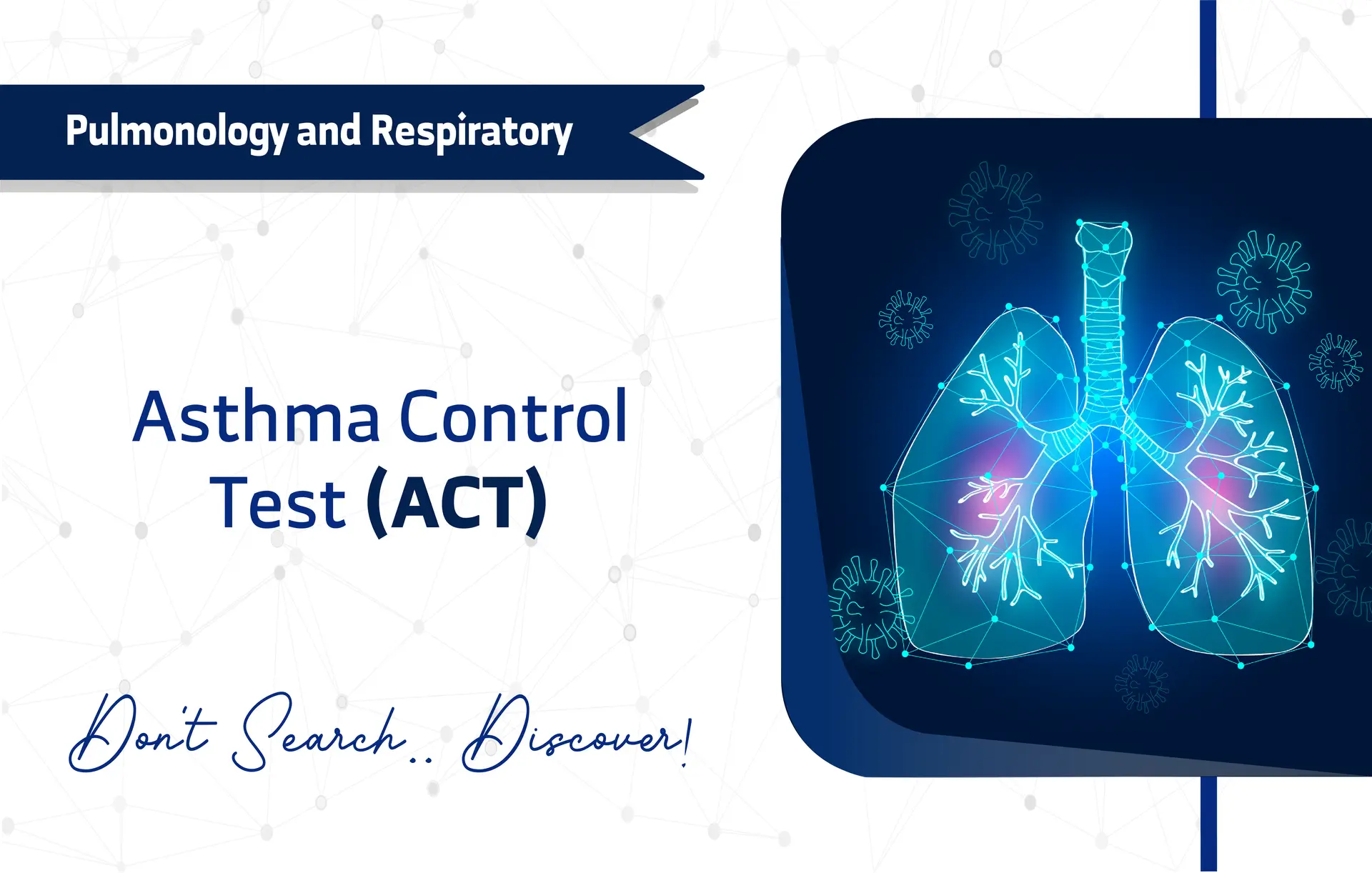Introduction
Developed by Nathan et al. in collaboration with QualityMetric Incorporated (now part of Optum) in 2004, the Asthma Control Test (ACT) is a widely recognized tool for assessing asthma control in patients aged 12 and older. With over 1,000 citations on Google Scholar, its adoption in clinical and research settings highlights its reliability. For instance, its brevity makes it ideal for primary care. Consequently, this article explores the ACT’s features, applications, and clinical utility, providing researchers and clinicians with actionable insights to optimize asthma management.
Key Features of the Asthma Control Test
Purpose and Use of the Asthma Control Test
The ACT assesses asthma control in patients aged 12 years and older by evaluating symptom frequency, rescue inhaler use, and the impact of asthma on daily activities. Clinicians use it for screening, monitoring, and treatment planning, while researchers employ it in clinical trials and epidemiological studies. For example, its focus on asthma control helps tailor interventions, making it a cornerstone in respiratory health management.
Target Population
The ACT is validated for adolescents (13–17 years) and adults, including:
- Young Adults (18–24 years)
- Middle-Aged Adults (25–44 years)
- Older Adults (45–64 years)
- Seniors (65+ years)
Additionally, the ACT for Children (cACT) extends its use to ages 4–11. Thus, it suits diverse clinical and research settings, though pediatric applications require specific adaptations.
Structure of the Asthma Control Test
The ACT consists of 5 questions covering:
- Symptoms frequency.
- Nighttime symptoms.
- Activity limitations.
- Rescue medication use.
- Overall control.
Each item uses a 5-point Likert scale (1 = poor control, 5 = well-controlled), ensuring efficient data collection. As a result, it captures asthma control comprehensively in a concise format.
Scoring Method
Each ACT question is scored from 1 to 5, yielding a total score of 5 to 25. Higher scores indicate better asthma control. Clinicians interpret scores as follows:
- ≤19: Poor asthma control (needs intervention)
- 20–24: Well-controlled asthma
- 25: Fully controlled asthma
For instance, a score of ≤19 prompts further evaluation or treatment adjustments. Therefore, the clear scoring system facilitates clinical decision-making and research analysis.
Administration Format of the Asthma Control Test
The ACT offers flexibility in administration and can be completed via:
- Paper-based forms.
- Digital (Online) platforms.
- mobile app formats.
The ACT is self-administered, requiring no special training, and takes 5–10 minutes to complete.
Applications of the Asthma Control Test
The ACT serves multiple roles in asthma management:
- Screening: Identifies patients with poor asthma control, signaling the need for intervention.
- Monitoring: Tracks changes in asthma control over time, particularly during treatment.
- Treatment Planning: Guides therapy adjustments based on ACT scores, prioritizing uncontrolled cases.
- Research: Supports clinical trials evaluating asthma interventions, advancing evidence-based practice.
For example, a score of ≤19 may prompt a clinician to escalate therapy, while researchers analyze trends in asthma control prevalence.
Languages and Availability
To support global use, the ACT is available in multiple languages, including:
- Arabic
- English
- Mandarin Chinese
- French
- German
As well as Portuguese and Spanish. This multilingual accessibility enhances its value in international asthma research and clinical practice.
Reliability and Validity
The ACT demonstrates high reliability, with a Cronbach’s alpha ranging from 0.77 to 0.85, indicating strong internal consistency (Nathan et al., 2004). Validation studies confirm its efficacy across diverse asthma populations, ensuring robust psychometric properties. Moreover, its sensitivity to changes in asthma control makes it a trusted tool for monitoring treatment outcomes.
Cost and Licensing of the Asthma Control Test
The ACT is free for non-commercial use under a proprietary license managed by Optum. For inquiries, contact Optum.
Related Questionnaires and Other Versions
Researchers and clinicians may find it useful to be aware of other questionnaires that are similar or complementary to the ACT, such as:
- ACQ: Asthma Control Questionnaire.
- ATAQ: Asthma Therapy Assessment Questionnaire.
Additionally, other versions of the ACT exist, including:
- cACT: the ACT for Children extends its use to ages 4–11.
These related instruments provide additional options for researchers studying Asthma across different populations.
Limitations and Considerations
However, despite its strengths, the ACT has a few limitations:
- Self-report measure: Respondents may be influenced by social desirability bias or personal interpretation.
- Age Restrictions: It is not suitable for children under 12 without the cACT adaptation.
- Narrow Focus: It may not capture all aspects of severe asthma, requiring complementary tools like the Asthma Control Questionnaire (ACQ).
Additional Resources
For further exploration, consider these resources:
- Original Validation Study: Nathan et al., 2004
- Access the ACT as a PDF: Asthma Control Test.
- For further information: GINA Guidelines (references ACT for asthma control monitoring).
Frequently Asked Questions (FAQ)
- Who can use the ACT?
Clinicians, researchers, and healthcare providers use the ACT for patients aged 12 and older with asthma. - How long does it take to complete the ACT?
Patients typically take 5 to 10 minutes to complete the ACT, making it feasible for clinical and research settings. - How is the ACT administered?
Healthcare teams administer the ACT via paper, digital, or mobile app formats, offering flexibility in usage. - Is there any cost to using the ACT?
The ACT is free for non-commercial use. For commercial or funded academic projects, permission from may be necessary.
A word from ResRef about the Asthma Control Test
The ACT is a gold-standard tool for asthma control assessment, balancing brevity with clinical relevance. Whether you are a researcher evaluating disease impact or a clinician improving patient care, the ACT reveals critical areas that need attention. Consequently, it leads to better outcomes and informed treatment decisions.
References
- Nathan RA, Sorkness CA, Kosinski M, Schatz M, Li JT, Marcus P, Murray JJ, Pendergraft TB. Development of the asthma control test: a survey for assessing asthma control. J Allergy Clin Immunol. 2004 Jan;113(1):59-65. doi: 10.1016/j.jaci.2003.09.008. PMID: 14713908. Study link.









1 thought on “Asthma Control Test (ACT): A Guide for Clinicians and Researchers”
I am truly thankful to the owner of this web site who has shared this
enormous piece of writing at this time.